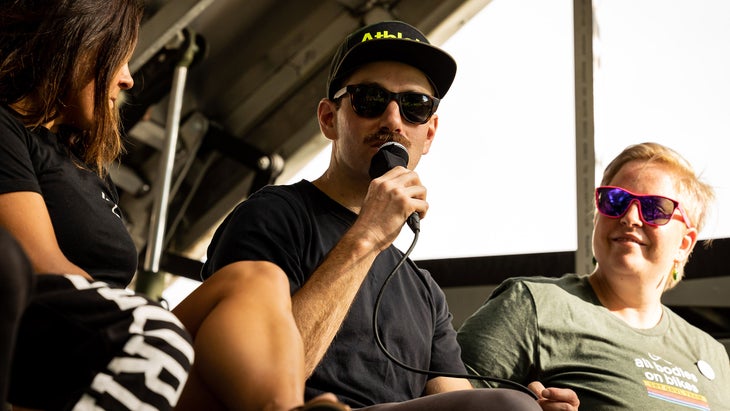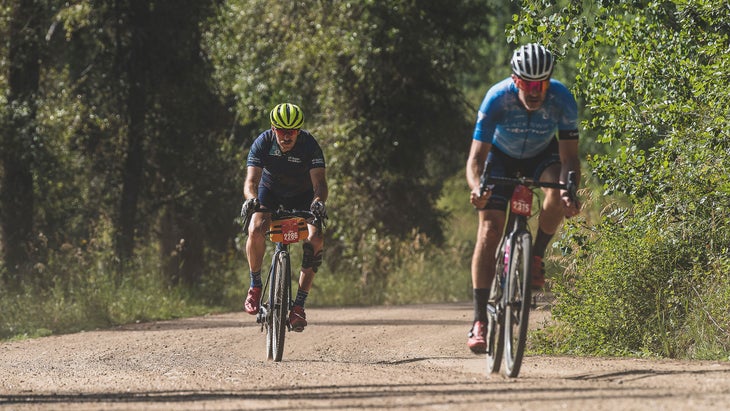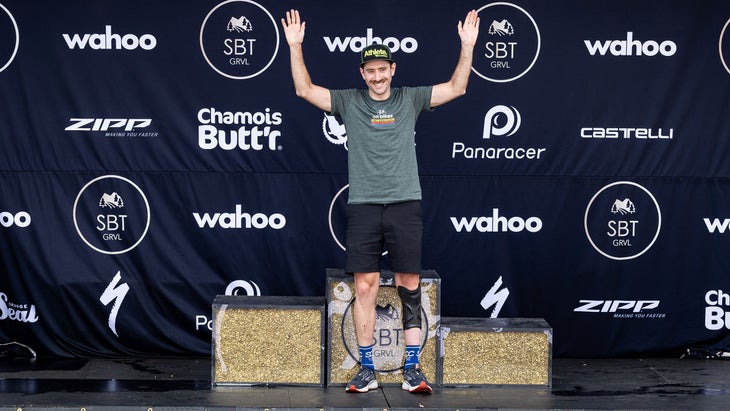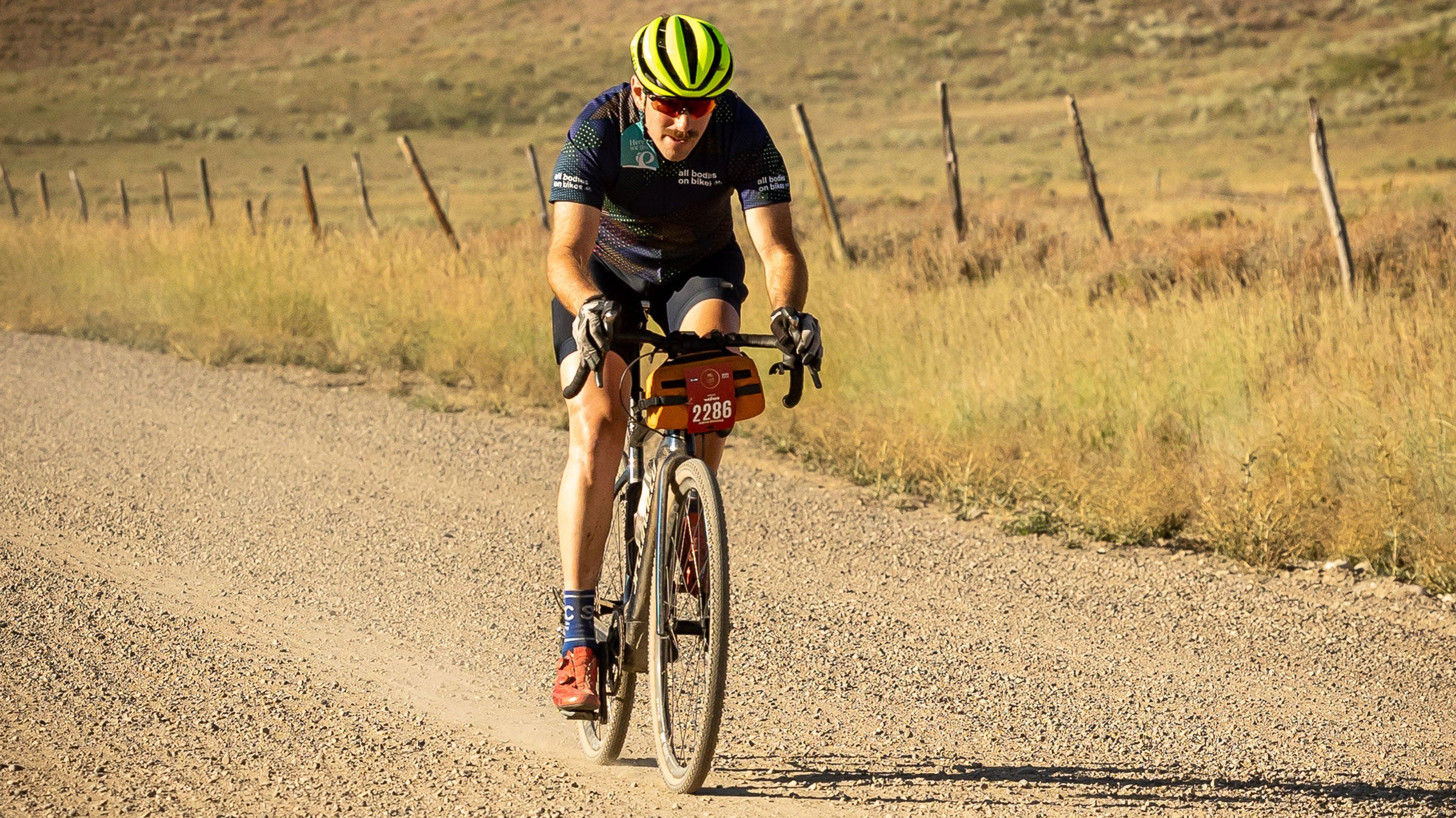As I stood by my e-bike on the start line of Colorado’s gravel race in August, surrounded by hundreds of other cyclists, I asked myself if I should be feeling like an outsider. Although I knew there were other paracyclists participating in the race, at that moment, surrounded by other able-bodied racers, I felt like the only one. I wondered, too, if I should be feeling triumphant, or maybe nervous, as I waited to start my first big race since a hit-and-run in 2019 left me near death and permanently partially paralyzed.
Instead, I felt right at home. I’ve done hundreds of bike races, and this was my third as a paracyclist. But my comfort caught me off-guard, given the newness of the experience I was about to have: new race, in the event’s new paracycling category, and riding with my still-new body. Looking for something to be comfortably nervous about, I started thinking about my new, untested tires, which were necessitated by an ill-timed sidewall tear days earlier.��
Did I have the right pressure? Would they be grippy enough?
I’d ridden a lot in the weeks leading up to Colorado’s largest gravel race, and had started to feel like the competent, confident rider I used to be, albeit, now accompanied by the whine of my bike’s electric motor when I pedaled. I’d been climbing thousands of feet on the weekends and keeping up with able-bodied riders on group rides.��
“It’s champagne gravel,” I said to myself, a name that references Steamboat Springs’ pavement-smooth dirt roads, “it’s fine. It’ll be fine.”����
I told myself that things were fine a lot in the lead up to SBT, even when they were not: it was fine when I rode a borrowed bike at Pete Stetina’s Pay Dirt gravel race in May, and got a bad saddle sore; it was fine when my chain seemed to bounce off my bike after every bump at Colorado’s FoCo Fondo in July; it was fine when I couldn’t even sign up for two other races in Colorado because they didn’t allow e-bikes, no matter how paralyzed my leg was.��
As a result, I wanted to have a good experience at SBT GRVL; for it to actually be a fine day. The race organization welcomed paracyclists, as well as other marginalized groups, following the lead set by another gravel event, Rebecca’s Private Idaho. Not only was SBT GRVL one of several races to add a paracycling category in 2022, but it also welcomed non-binary athletes with their own categories, and reserved space for the BIPOC-focused group Ride For Racial Justice and the body-inclusive group All Bodies On Bikes, of which I was a member.��������
“We feel really strongly that bikes are a vehicle to build relationships, build community, and see new places,” said Greer Van Dyck, SBT GRVL’s community relations director. “Our efforts at being inclusive is the vehicle to help more people of all kinds access that experience.”��

The inclusion of paracyclists at more gravel races came at a good time for me, because after three years of healing, I finally felt ready to compete again. Competitive cycling used to be a major part of my life, and prior to the crash, I was used to training and racing 18 hours a week, nearly year-round. The last time I’d raced was in 2019, my sixth season competing in elite international races on the track, and my 11th season as an elite road racer. The Pay Dirt race was the first time I mustered the courage to line up since the bike racer version��of myself was replaced by a different primary descriptor: survivor of vehicular assault. The race went OK, but I forgot the basics of competitive cycling: eat food, drink, and, don’t ride an unfamiliar saddle when half your ass is atrophied and you’re going to be very far from the car.��Plus, racing with only one functional leg was��a whole new thing for me. FoCo Fondo went better, drivetrain issues notwithstanding, but I was the only para in the race and didn’t really feel any real pressure to compete.����
SBT was different. Paracyclists could compete in any of the four distances: 37, 60, 100, or 142 miles, and there were more than 40 para-athletes in attendance. There were enough of us that finding accessible parking in town was a bit of an unusual and welcome challenge. We exchanged knowing nods with each other as we cruised the pre-race expo on Yampa Street.��
Meg Fisher, a physical therapist who lost a leg as a young woman and then went on to represent the U.S. in two Paralympic games, was largely responsible for the throng of para-athletes at SBT GRVL. Fisher has preached the importance of welcoming paracyclists to race promoters, highlighting the opportunity the new discipline of gravel has to set the standard for inclusion in cycling—a sport that doesn’t have the best track record of being welcoming.��She organized a reunion for the 2012 Paralympic cycling team at SBT, guaranteeing a critical mass of athletes. Ratcheting lace maker BOA has a medical division, called Click Medical, that’s based in Steamboat Springs and supplies parts for the orthotics and prosthetics that some para athletes, including me, use. They offered prizes for the para-categories, setting the scene for a showdown.��
Kind of.
In Paralympic cycling, athletes are separated into narrow categories based on ability and the equipment they use. At SBT GRVL, we all raced each other in one conglomeration; me and my single paralyzed leg, riding a standard, upright e-bike, could be racing someone with no normally working legs cranking a handcycle up a climb, with or without an electric assist. But the para-athletes I spoke with were excited to be at SBT GRVL, and not at all hung up on minutiae. For many of us, racing was more about participation than results.
Sydney Marshburn, a 24-year-old racer from Murfreesboro, Tennessee, may have been the most excited of all of us. Less than a year prior, she lost most of her left leg to the rare medical condition Ehlers-Danlos syndrome, a disorder that impacts connective tissues and blood vessels. She won an entry to SBT in a sweepstakes,��and SBT was her first time riding her recumbent trike on gravel.��
“Adding a para category to a large event like SBT GRVL showed the world that cycling is for everyone, no matter a person’s physical impairment,” she told me.��
Sydney’s goal was to finish; I dreamt of winning.��
In fact, I was determined to win at all reasonable costs. I was participating in the 60-mile race, and would share the course with nearly 1,000 other riders. So I decided to ride the front and stay ahead of other paracyclists by outriding every cyclist I could. I hoped my new tires had enough grip and that my chain would stay on.��

The race started with a horn and I weaved through riders until I was sitting at the front, my bike humming away in tour mode—the lowest boost settings. It was so exciting to be there, at the head of the race, slicing through the chilled morning air, chatting with other racers and taking selfies. It felt just like the gran fondos I’d ridden in the past—a calm moment before the race began. I stopped worrying about how I thought I was supposed to be feeling and settled into the moment.��
Soon, we hit that champagne gravel and the race was on. I latched onto the back of the lead group and we grunted up a climb. I closed small gaps between the abled-bodied riders ahead a couple times before they dropped me. I switched to turbo mode to catch back up. Were other paras using turbo? Were they sweating up a hill on a handcycle, already miles behind with their lesser mechanical advantage? I decided not to worry about it. Sixty miles is comfortably within the range of my bike’s batteries (and the strength in my legs) but I knew I had to be judicious with turbo mode or I wouldn’t make it home. The next time I got dropped, I chased on the flats alongside another rider.��
I lost the lead group at a rest stop when I paused to fill my bottles and the bunch continued on. I declined the proffered whiskey shot because I’m a Serious Bike Racer and it was 9:30 A.M., but I still wasn’t able to catch them. I flashed through wafts of manure scent emanating from sleepy ranches and took in the rolling, desert scenery dotted with clumps of cottonwoods and interlaced with streams that gushed after an unusually wet summer.��
I switched to turbo mode for the long, final climb, and started passing some blown 60-milers who had dropped me earlier. After cresting, I inelegantly clattered down the long, bumpy descent. Because of my left leg’s paralysis, I can’t stand evenly on the pedals. Instead, I descend rough terrain by standing on the right pedal. It’s not fast, nor a good way to control the bike, but it’s all I’ve got. I did my best to avoid ruts and bulls.��
Closing on the finish, the bike batteries were dipping below ten percent and my leg—the one that pedals—was very fatigued. I stopped the clock at three hours and two minutes, first paracyclist and 18th overall in the 60-mile distance.��
I spent the rest of the day hanging at the finish with my fiancee and friends, cheering for other riders.��

Sydney was teary at the finish line. “It was the first time in years I didn’t feel completely broken,” she told me later.��
Meg Fisher, the paracycling advocate, was among the last to finish, having completed a back-to-back challenge called the LeadBoat. She had raced the 100-mile Leadville Trail 100 MTB on Saturday, and then done SBT’s 140-mile race on Sunday, becoming the first paracyclist ever to do so.��
“Finishing is representative of what we all can do,” she said later��“I love that my limits haven’t been reached yet. I think that’s what we all find when we set these audacious goals and find that we can reach them.”
When it was my turn on the podium, I was tempted by that top step, but it seemed too tall for my shaky, paraplegic balance, and there was no handrail or wall nearby for me to cling to as I climbed up. Instead, I stood in front of the podium and raised my arms, very grateful for the opportunity.


